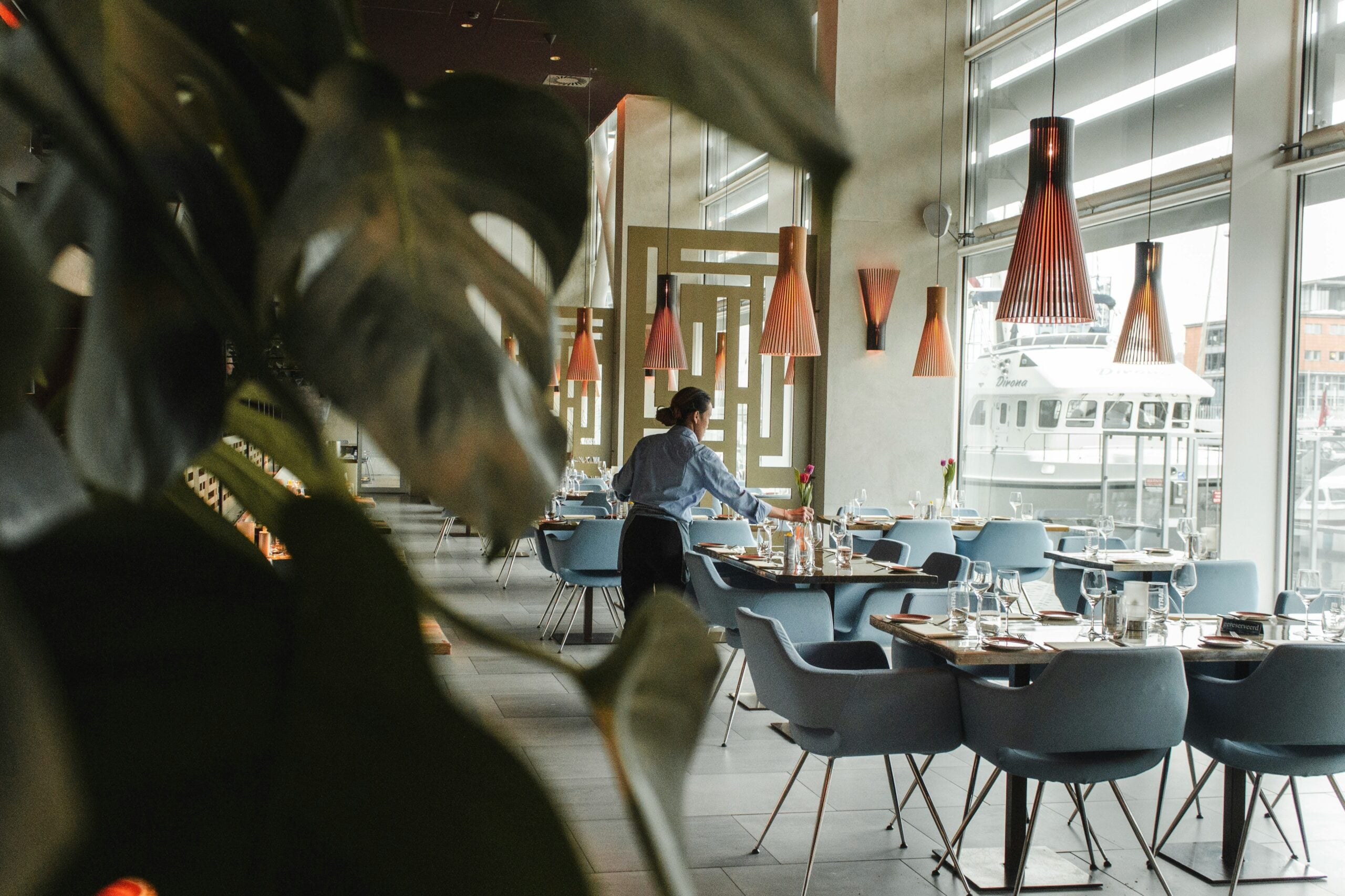Banner image courtesy of Louis Hansel on Unsplash
In the hospitality industry, first impressions are everything. Before your guest receives your five-star treatment or extravagant amenities, they encounter your staff. And the uniforms that your workers wear speak more about your brand before a word is ever uttered.
Modern hotel uniforms have evolved far beyond plain polo shirts and sloppy pants. Hospitality uniforms now blend style, functionality, and brand image into a visual language that supports the entire guest experience.
Why Are Uniforms Important in Hotels?
Hotel staff uniforms serve several functions simultaneously. They provide visual hierarchy, so your guests immediately know who can assist them. They convey your property’s personality, whether that is timeless sophistication, modern simplicity, or boutique whimsy. They even impact employee morale and performance; employees who feel comfortable and confident in their uniforms deliver higher levels of service. Astute hoteliers understand that investing in a sophisticated uniform for hotel staff is not an expense; it’s a strategic decision that impacts everything from brand image to employee retention.
Front-of-House Superbness: Concierges and Reception
Your concierges and front desk team are your property’s representatives, the first point of contact for guests. Hotel uniforms for the front desk should project sophistication, authority, and friendliness, creating a welcoming and lasting first impression. Tailored waistcoats or blazers in your corporate colours, topped with crisp shirts and neat trousers or skirts, will convey a message of professionalism and trustworthiness. The key is achieving a perfect balance between friendly and formal.
Concierges require uniforms that are respectful but approachable. Classic choices are formal suits with subdued distinguishing features—perhaps a unique pocket square, lapel pin, or tie motif that visitors become familiar with. Modern versions might feature fashion-forward cuts or fashionable materials that remain professional but feel current.
Valet and Door Staff: Form Meets Formality
Valets and door staff work in all climates while keeping a flawless appearance. Their uniform demands attention to outdoor performance. Water-repellent topcoats, UV-protective fabrics, and temperature-control materials provide comfort throughout seasons.
Traditional choices are double-breasted coats with brass buttons, suggesting traditional hotel style, but newer alternatives employ technical materials with traditional style. Consider removable linings for temperature variation, reinforced shoulders for durability, and reflectivity for safety at night. These workers are constantly in motion, bending, reaching, and opening doors, so mobility-focused designs with stretch panels or action backs prevent restriction.
Management: Leading by Example
Management uniforms should distinguish leadership without disrupting team cohesion. This may be an alternate colour scheme or subtle design variations on the standard uniform. Your hotel managers and executives need uniforms that are stylish and sophisticated – full suits for senior managers and blazers for department heads.
The goal is approachable authority. Guests need to find management easily, but not be intimidated to approach them. Quality is paramount here; management uniforms have to reflect the standards you uphold across your property. Attention to detail matters: consider bespoke tailoring options, quality fabric choice, and understated accessories that add without alienating.
Food and Beverage: Style That Serves
Restaurant, bar, and banquet service uniforms must balance ambience and functionality. Choose uniforms that reflect your establishment’s style, but also ones that are comfortable for long shifts. Practical options include the classic Oxford shirt paired with comfortable pants or skirts and branded aprons for a relaxed yet cohesive look.
Bartenders prefer waist aprons with many pockets to hold gear, whereas servers need materials that resist stains and can handle inevitable spills. Moisture-wicking, breathable fabrics work best for staff who work in warm dining rooms or dash between tables. Don’t neglect the sensory aspect, non-rustling materials when staff move help maintain the dining atmosphere.
Modern trends favour mix-and-match programs under which the employee can customise within parameters, but express personality without going off brand. This also simplifies inventory and is more accommodating to different body types.
Kitchen and Back-of-House: Where Performance Matters Most
Kitchen uniforms are put to the ultimate test of functionality. Chef coats must be able to handle extreme heat, repel stains, and permit free movement. Contemporary chef coats include cooling fabrics, mesh panel ventilation, and antimicrobial technologies. The classic double-breasted style has a function beyond just looks, it permits flipping the coat over to conceal stains during service.
Colours matter in kitchen environments. While white remains the norm among chefs, many kitchens opt for black or charcoal coats. Support staff in kitchens benefit from the same performance attributes in coordinating but varying styles.
For housekeeping and maintenance staff, functionality and comfort overrule appearance, although contemporary choices manage to merge both. Search for uniforms with knee reinforcements, several pockets strategically placed for tool storage, and materials resistant to industrial washing. These hardworking individuals are worthy of uniforms that facilitate their physical labour while making them feel appreciated.
Key Selection Criteria and Implementation
When selecting a uniform for hotel personnel, make sure to work with a business that provides full sizing options, customised embroidery or branding, and flexible ordering systems that suit your requirements. Businesses specialising in hospitality uniforms provide a wide range of tailored uniforms to hotel settings, with anything from single items to entire property-wide programs.
Think beyond the upfront cost. Durable, high-quality uniforms that will last through multiple washings and cleanings save money in the long term. Compare the performance of fabrics, care required, and replacement processes.
Implementation of new uniforms requires planning. Involve staff in the selection process – they will be wearing them all day, so their input ensures comfort and functionality. Create care guidelines and consider on-site laundry schemes for consistency.
Takeaway
Modern work attire combines functionality with style, creating clothing that employees want to wear, but still emits the professional image that guests expect. From cool, moisture-wicking fabrics for housekeeping staff to top-of-the-line chefs’ aprons and sleek, fitted attire for front-of-house employees, new hospitality uniforms emphasise comfort and appearance equally.
Your uniforms are silent brand ambassadors, working 24/7 to express your property’s standards and values. Through smart selection of uniforms that deliver on aesthetics, functionality, and representation of your brand in all roles, you achieve visual harmony that enhances guest experience while maximising your people’s performance. In hospitality, it’s all about the details, and what your staff is wearing is something guests notice, consciously or subconsciously.


